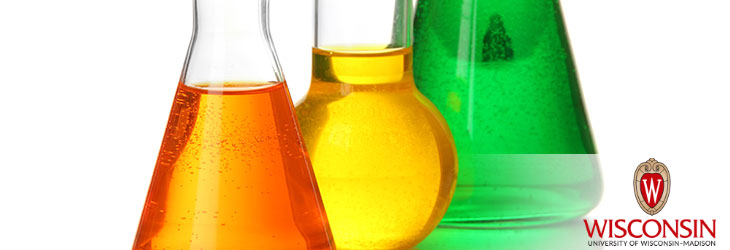Materials & Chemicals

Skin Whitening Agent(s)
WiSys: T140007WO01
Inventors: Cheng-chen Huang, Aaron Monte
WiSys Technology Foundation is currently seeking a strategic industry partner to assist in the further development of A11 and related analogues providing a route to market for their use as novel skin whitening agents. Possible applications include skin lightening. The competitive advantage of these compounds over existing agents on the market is that they produce long-acting and reversible skin lightening with no toxicity.
Overview
The global cosmetics industry is a $460 billion dollar market with the skin whitening sector valued at $381 million in 2014. This growing market is projected to increase at a CAGR of 11.7%, reaching $827.9 million by 2021 with the Asia Pacific region representing the largest market share (66.3%) followed by the United States (19.1%). According to a report by Frost & Sullivan, factors that are driving the market include an increase in developing opportunities in the West as well as the growth of natural plant-based extracts as an innovative approach to address the increasingly stringent regulatory and safety requirements for skin whitening agents.
Skin whitening agents inhibit production of the pigment melanin to produce a lighter skin tone, often by inhibiting synthesis of tyrosinase, a key enzyme in melanogenesis. While there are numerous skin whitening agents on the market, most products only provide for short-term efficacy and many possess adverse side effects. In fact, hydroquinone-based products (representing 29.6% of the market) are known to be a skin irritant, are banned in Europe, and are no longer consider GRASE (Generally Recognized as Safe and Effective) in the US. As such, the opportunity and demand for the development of natural and safe agents, that can be produced cost effectively, cannot be overstated.
The Invention
Following on from earlier research focused on development of stilbenoid-based derivatives for antimicrobial activity (isolated originally from the sweet fern Comptonia peregrina), researchers at UW-River Falls have generated a preclinical data package using zebrafish embryos which demonstrates lead analogues to possess potent skin-lightening activity. The zebrafish embryo model makes an excellent model for pigmentation studies due to the rapid and well-conserved melanocyte development and melanin synthesis. Lead compound, A11, has been shown to have more potent activity compared to a number of current skin-lightening compounds including arbutin which required a significantly higher concentration (300mM) to achieve comparable effects as A11 at 10M (70% versus 90% inhibition, respectively). Most importantly, A11 caused no detectable toxicity, whereas niaciamide and tretinoin caused strong toxicity to developing embryos while gallic acid killed the embryos at 50mM and arbutin caused cardiac degeneration.
When tested for long-term efficacy, A11-incubated embryos demonstrated a 50% recovery of pigment 48 hours after wash, suggesting longer-acting skin-lightening effect as compared to other products which fully recovered (100%) their pigment within 24 hours after wash. Importantly, while A11 possessed these longer-acting effects, this study also demonstrated that the effects are reversible, which is an important factor for skin-whitening agents.
Unlike most products on the market, A11 does not appear to act by inhibiting the tyrosinase enzyme and preliminary studies in a melanoma cell line suggest that the molecule may possess a different mechanism of action and may lead to skin-lightening via the control of melanocyte development and/or proliferation. Further studies are underway to better understand the molecular mechanisms of A11 using fish embryo and mouse melanoma cell lines. Interestingly, preliminary data from these studies also support potential use of these compounds in melanoma treatment. Additional in vivo studies utilizing a guinea pig or mouse model has been proposed to further validate the skin-lightening activity of A11 and related analogues.
Applications
- Skin lightening
Key Benefits
- Long-acting
- Reversible skin-lightening effects
- Non-toxic
Stage of Development
Studies have been performed in zebrafish and mouse melanoma cells demonstrating long-lasting, reversible skin lightening effects with no observable toxicity. Presently, work is being done to identify the molecular mechanisms underlying these effects. Further in vivo validation has been proposed in mammalian models such as mouse or guinea pig. Beyond these studies, additional support would be needed for further preclinical and clinical development.
Tech Fields
For current licensing status, please contact Jennifer Souter at [javascript protected email address] or (608) 316-4131